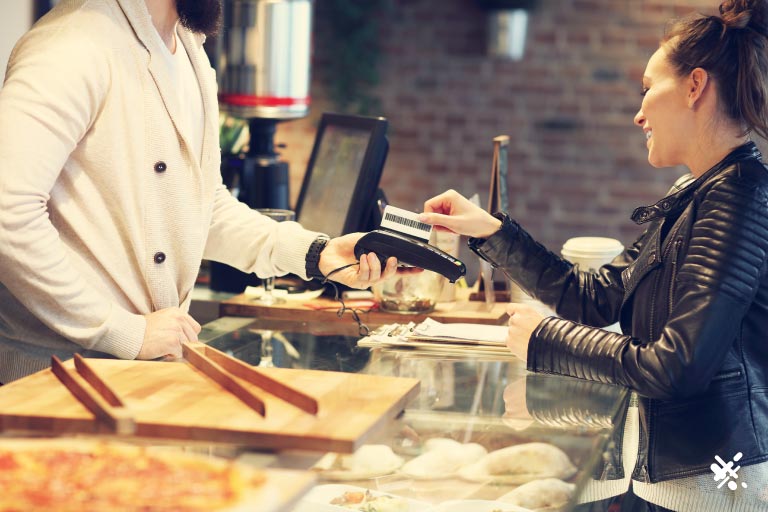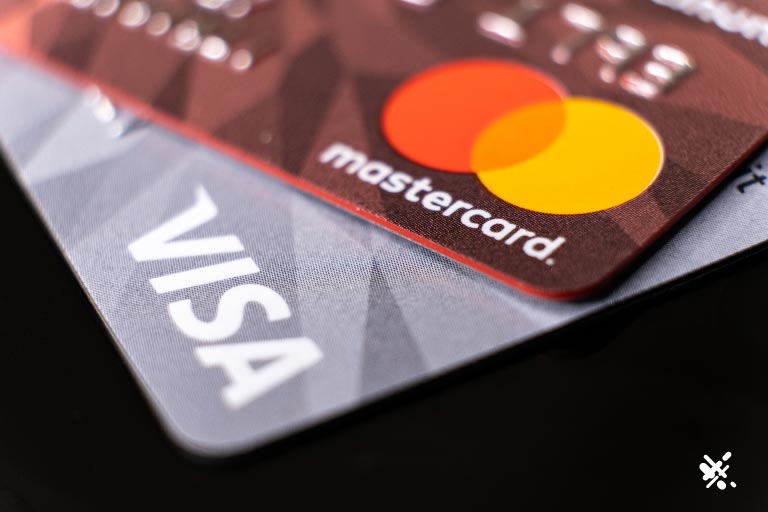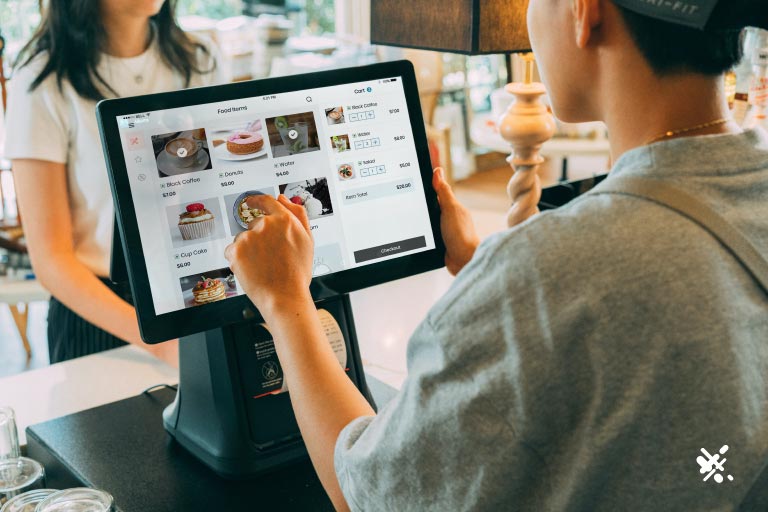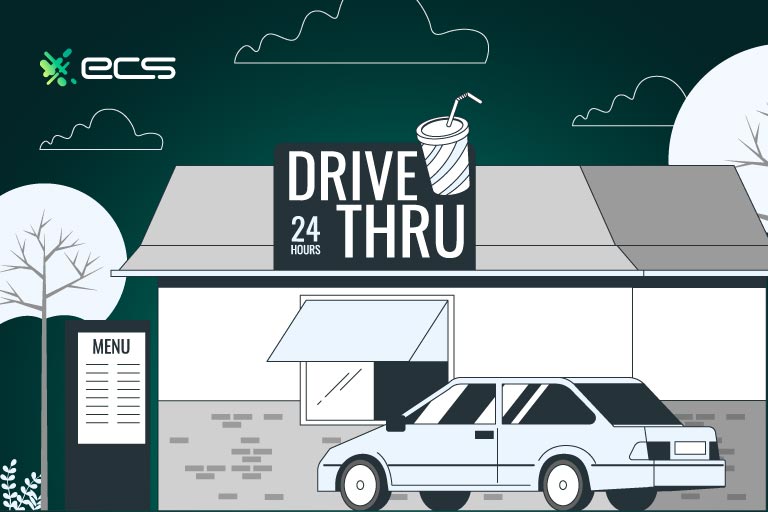Both large and small restaurants have faced challenges post-pandemic. Changing customer behavior, rising supply costs or supply chain issues, and changes in foot traffic in major cities have all impacted restaurants. Therefore, successful restaurants need to leverage every advantage they can to overcome and emerge more robust. One area that industry leaders are leveraging is their restaurant payment solutions.
In fact, nearly 90,000 American restaurants were forced to close during the “Pandemic times.” But industry leaders who knew how to leverage their tools and resources made it through.
Payment processing has become even more vital as more and more payments go digital and consumer trends quickly evolve. Gone are the days when you can secure credit card processing and assume that’s the end of your payment processing strategy.
From fee structures to new technology that integrates with your business operations, the right payment processing solutions can often be the difference between just getting by and growing and succeeding as a restaurant.
To help you get started, we’ll go over all the critical areas of payment processing so you can make the right choice for your restaurant.

Understanding Restaurant Payment Solutions and Credit Card Processing
While processing a credit card may seem relatively simple on the surface and only take a few seconds to complete, it involves several critical players. Understanding the different entities helps you to also better understand fee structures and how they differ.
Merchant
As a restaurant, you are the merchant, and you need to apply for a merchant account in order to process digital or electronic payments such as credit and debit cards. Applying for a merchant account is relatively easy and only takes a few days in most cases once you submit your information.
You’ll need to supply basic business information as well as estimates on your average transaction amounts and monthly transaction volumes. If you are a new restaurant with no sales data yet, estimating these totals as accurately as possible is important.
The payment processor will use these estimates to determine your risk and, therefore, your rates for various transaction types. Being off by a lot with these estimates can lead to you paying higher rates than you should or dealing with overage penalties if you estimate too low.
The Payment Processor
The payment processor is your partner for credit card processing. You will obtain your merchant account through the payment processor, sometimes called an acquiring bank.
Choosing the right payment processor is critical when setting up payment solutions for your restaurant. The right payment processor will personally work with you to determine your processing needs.
They can then offer advice and suggestions based on their experience servicing customers who run similar businesses.
This level of experience and one-on-one customer service isn’t available through all payment processors. This is especially true of larger payment processors known as aggregate payment processors. For example, companies like Toast or Square are aggregate payment processors, and essentially, all their customers share one merchant account.
This means higher fees on average, and you have less control over your payment processing.

Card Networks
The card networks are the branded cards you’ve heard of. These are most commonly Visa, Mastercard, and American Express.
As a merchant or restaurant, you won’t have much direct contact with the card networks, and your transactions will pass through them. Most issues or contact you have will be communicated with the payment processor.
The card networks each run an interchange and set processing fees for transactions on their interchange. This is important and something we’ll touch on in more detail in later sections regarding processing fees.
Issuing Bank
The issuing bank provides the specific card the customer uses at your restaurant. As the transaction is authorized, this is the final stop, and when the issuing bank confirms that funds are available, they are then transferred to your merchant account.
Payment Gateway
All the communication between the above entities travels along the payment gateway. The payment gateway is a secure network connecting all the above components.
There are different payment gateways, and a good payment processor should offer a choice of payment gateways so you can choose the one that is best for your restaurant.
You’ll also have direct contact with the payment gateway, as many of your business systems and software will need to connect to the payment gateway. This connection is usually done via an API or application programming interface.
To recap, the payment processing workflow works like this:
- The customer presents their credit or debit card at your restaurant.
- The restaurant merchant account captures the card information and passes it to the payment processor for the initial fraud checks via the payment gateway.
- The payment processor passes the information to the card networks, where additional checks are performed.
- The transaction arrives at the customer’s issuing bank, where it is confirmed that funds are available.
- The merchant receives a message that the transaction was approved, and funds are moved to the merchant account, where they can later be withdrawn to the restaurant’s bank account.

Additional Restaurant Payment Solutions and Processing Features
Accepting credit and debit cards is vital for any restaurant, but that’s just the start of how payment processing can help your business improve and run more efficiently.
Many restaurants use a POS (point-of-sale) system. These are a combination of hardware and software that integrates with their existing payment or business infrastructure. The purpose of a POS system for restaurants is to add additional features that help with sales tracking, inventory, and even employee management.
The payment workflow we described in the earlier section still holds true. But the POS system now tracks sales and transactions and integrates that with other data. You can also integrate them with your online ordering system to further streamline your workflow.
Below are some common features of POS systems.
Customizable Menus
Restaurants often have different menus at different times of the day or different days of the week. They may also run specials with different pricing, such as a happy hour promotion. A POS system allows a restaurant to change its menu and prices across the board immediately.
Each menu variation can be saved and then recalled when needed. This makes it so staff don’t have to worry about pricing or other changes, as the POS system deals with all of this for them.
It also allows restaurants to be far more nimble and offer promotions when needed to drive sales during slower times.
Inventory Management
Individual ingredients can be paired with menu items so that when an item is sold, that ingredient is taken from the inventory. This allows for accurate inventory tracking and staff to be alerted if inventory runs low.
Without a POS system doing this in the background, an employee would need to be assigned to keep track of inventory. With the automation that a POS system provides, it saves employee hours and also allows staff to work on more pressing issues.

Sales Analytics
Since POS systems integrate with restaurant credit card processing and cash drawers, it’s easy to track all sales, and then the data is presented for analytical purposes. This allows restaurants to spot trends or lagging areas and make adjustments.
Most POS systems have data visualization tools included so graphs and charts can be automatically created from the stored sales data.
Loyalty programs
Loyalty and reward programs are popular in all forms of retail, and restaurants benefit from them as well. When implemented correctly and with the right perks, these programs can drive repeat business, in-store traffic, and average ticket size. In fact, successful loyalty programs earn merchants an additional 15-25% in revenue.
A POS system simplifies implementing and managing a reward system or gift cards. Many POS systems have a reward feature built-in or are part of a free plan or tier of additional services that come included. Restaurants can also use third-party reward programs that integrate with their chosen POS processing software.
If you run a restaurant and are looking for a POS solution to integrate with your payments, contact ECS Payments. We offer many restaurant payment solutions, including popular POS systems that can help you increase revenue and streamline your operations.
Restaurant Payment Processing Fees
When looking for restaurant payment processing solutions, one of the main concerns is fees. The wrong fee structure can eat away at a restaurant’s margins and make it more challenging to be competitive.
However, fees are a necessary part of payment processing, so understanding them is crucial to ensure you get the best deal for your situation.
Most credit card processors will have a monthly fee for certain standard services and then charge a per-transaction fee based on the chosen processing fee structure.

Fee Types
Fees include things like monthly access fees, statement fees, and other ongoing costs to manage the network and provide you with service.
Some other flat fees are:
- Payment gateway access fee
- Batch fees
- Reporting fee
- Hardware or terminal fees
- Network access fee
Not all processors will charge the same fees, but a good payment processor should list all their fees individually and be completely transparent about them. There shouldn’t be any surprise monthly or flat fees when using a reputable payment processor.
It’s also essential to carefully review all these fees and ask about each one. There may be some negotiating possible in some situations, but not always. Also, low flat fees may seem attractive, but that may mean that the transaction fees are higher, which can cost you more if you do high volumes.
Processing Fees
Processing Fees will make up most of your fee structure and vary the most among all your fees. They are a percentage of the total transaction, and they can vary for different circumstances, even when using the same payment processor.
For example, processing for some credit cards, such as American Express, may have higher processing fees than a Visa card.
Overall, your processing fee is made up of three underlying charges that make up the total you will pay.
Interchange Fee
Every business pays interchange fees. It’s the base fee for using specific credit card networks, such as Visa, Mastercard, or American Express. The interchange fee makes up the bulk of your credit card processing fees.
Some processors charge a flat processing rate for all card transactions, no matter what. Depending on your volume and average ticket size, this can be appealing in some situations. Generally, only small ticket sizes will save money with flat rate processing fees.
The other pricing type is called interchange plus pricing or cost-plus pricing. With this pricing model, a specific rate is added on top of the base interchange rate for each type of transaction. This process makes your fee structure more complex but can offer cost savings in most situations.
For example, how the physical transaction takes place can have different interchange rates. A “card present” transaction, where the card is dipped into a reader, and then the customer signs a receipt, is one of the lowest-risk types of transactions and has low fees.
Card-present transactions are a common transaction type with many restaurants, which means if they pay a flat rate for all transactions, they aren’t getting the cost-savings they could since part of the flat rate is to cover all types of transactions, like online or card-not-present transactions, which have higher fees.
Most aggregate payment processors use a flat rate fee structure for processing fees. This simplicity seems attractive to many new restaurant owners, but the costs are much higher over time.
For most restaurants, it pays to dive into the more complex fee structure of interchange plus to secure lower overall processing fees.

Situational Fees
Finally, there are situational fees. These are fees you won’t pay regularly and only occur under certain circumstances. However, it’s still important to be aware of these fees because these incidents happen with every business occasionally.
Chargeback fees
Chargeback fees are fees when a customer disputes a transaction and initiates a chargeback. Customers can initiate chargebacks due to perceived poor service or services not being delivered. It can also be if the customer feels they didn’t authorize the charge.
Chargebacks aren’t as common in restaurants compared to other businesses, but they still happen. These fees can be high as well and are non-negotiable. If there is a dispute with a customer, it’s best to try finding a solution before it goes to a chargeback.
Too many chargebacks can increase your fees, so it’s best to avoid them.
Setup Fee
You may have a one-time setup fee for particular hardware or software. These are sometimes negotiable, although it highly depends on your business. Setup fees are usually standard, but watch out for excessive setup fees or fees that seem out of place for what you are receiving.
Monthly Minimum Fees
Monthly minimum fees don’t usually come up. But if they do, you must pay a nominal fee if you don’t hit your monthly processing estimates or a certain threshold.
Liquidated Damages
Liquidated damages are something to be aware of. It’s usually found with processors or payment services that have long contracts. If you end the contract early, it triggers a liquidated damage clause like an early termination fee.
However, with liquidated damages, you are charged what the processor or service provider feels they would have made from you if you had fulfilled the entire contract term. Different clauses have different amounts that they stipulate. So some may demand 100% of lost revenue while others may go for a percentage.
Either way, this can be very costly if you do ever want to end the contract early. Contracts aren’t uncommon in payment processing, but ensure you fully understand the terms and the costs of terminating the contract early.
In general, you shouldn’t sign extremely long contracts for payment processing unless you receive an outstanding deal that you know will benefit your business for the entire contract.

How To Choose A Payment Processor For Your Restaurant
Now that you understand how payment processing works when accepting payments for a restaurant, it’s time to choose your processor for your restaurant payment solutions.
Merchant Account Providers
Two main types of service providers allow you to process credit cards. Those are aggregate providers, which we discussed earlier, and payment processors that provide you with your personalized merchant account.
The simplicity of aggregate providers often draws in many new or even established restaurants. But these are usually poor financial choices for almost every restaurant.
You’ll pay far more in fees per year due to their flat-rate processing percentages, and you’ll also have far less personalized service.
With a merchant account provider, you have someone to contact directly for sales or technical issues. They understand your business and work with you one-on-one. With an aggregate service such as Square, you don’t have a specific contact; instead, you must contact their general support if you ever have an issue.
People choose an aggregate service because they think the approval process is more straightforward, and a payment processor may deny their application for a merchant account. But the approval process with a payment processor like ECS Payments is easy and generally can be completed within a few days.
It’s well worth the small amount of effort to enjoy the lower fees and better service. Payment processing for restaurants can generally have lower fees due to the type of transactions they run, so it’s wise to take advantage of this.

POS And Payment Options
Another area to consider when choosing a payment processor is their options. Whether you need a fully featured restaurant POS system customized for your business or just a simple payment terminal to accept cards and cashless payments, your payment processor should be able to offer options for everything.
Something else to consider is whether they offer integrated payment options. Integrated payments mean the hardware they provide or payment gateway access is compatible with your existing systems.
Finally, wireless POS system for restaurants. These work in environments where servers move indoors and outdoors or take payments at the table. In these cases, you may need mobile card readers or contactless payment devices that can work via Wi-Fi or 4G.
A good payment processor is fully aware of these integrations and can assist you in making the right choices to match your existing software and workflow at your restaurant.
Contract Length
Contracts are standard in payment processing, but some payment processors and service providers try to lock you into long contracts of up to 3 years or more. These may work for you, but consider your options carefully. A payment processor should have shorter options they can offer you in most cases.
Customer Support
Customer support is critical since if you have an issue with your payment system, it may mean you cannot process orders. So if there is a problem, you want a solution quickly.
It would be best to look for a payment processor with technical support in-house and not outsourced to a call center.
Even if you don’t have a technical issue, you may still have questions about your statement or want to consider upgrading equipment. For all these reasons, you want to be able to speak to someone immediately and get your questions answered.
Finding The Perfect Restaurant Payment Solution
If you need more assistance with your restaurant’s payment solutions, contact ECS Payments.
We offer complete POS systems built specifically for restaurants, in-house customer support, individualized merchant accounts, and the most competitive rates for credit card processing for restaurants and other digital payments.
